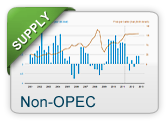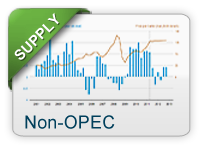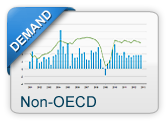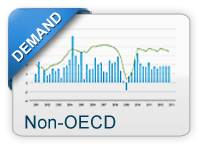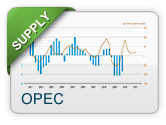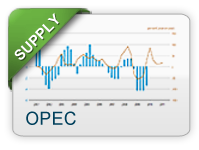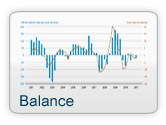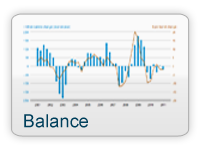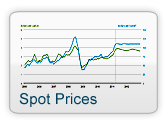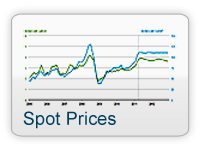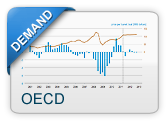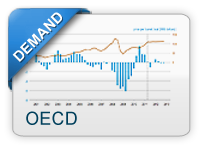What drives crude oil prices: Demand Non-OECD
Crude oil demand in countries outside the Organization of Economic Cooperation and Development (OECD) plays a significant and growing role in driving global crude prices. Developing non-OECD countries, particularly those in Asia, have experienced rapid economic growth in recent decades. This growth has fueled a surge in demand for crude oil and petroleum products to power the burgeoning transportation, industrial, and manufacturing sectors.
Data source: U.S. Energy Information Administration, Short-Term Energy Outlook
Oil consumption in OECD countries fell from 2000 to 2024. In contrast, oil consumption in non-OECD countries doubled during that period. The jump in non-OECD oil consumption reflects the rapid economic growth in these countries. Transportation, in particular, requires large amounts of oil and is directly tied to economic activity. Many manufacturing processes consume crude oil as fuel or use it as feedstock, and in some non-OECD countries, oil remains an important fuel for power generation. Consequently, oil prices tend to rise when economic activity, and in turn oil demand, is growing strongly. Many non-OECD countries are also experiencing rapid growth in population, which is an additional factor supporting strong oil consumption growth.
Structural conditions in each country's economy further influence the relationship between oil prices and economic growth. Developing countries tend to have a greater proportion of their economies in manufacturing, which is more energy intensive than service-based industries. Although transport-related oil use is usually a smaller share of total oil consumption in non-OECD countries, this use tends to increase rapidly as expanding economies increase the need to move goods and people. Vehicle ownership per capita is also highly correlated with rising incomes and has much room to grow in non-OECD countries. For these reasons, non-OECD economic growth rates tend to be an important factor affecting oil prices.
Energy policies also significantly affect the relationship between oil consumption and economic activity. Some developing countries, for example, control or subsidize end-use prices, dampening consumer responsiveness to price fluctuations. This reduced demand response to price changes further contributes to the importance of economic growth as a key driver of non-OECD demand and in turn global oil prices.
Although current oil consumption is primarily related to current economic activity, changes in the outlook for future economic conditions can also have an immediate impact on oil prices. For example, an improvement in the economic outlook would tend to increase the chance that oil markets will tighten in the future, resulting in higher expected future oil prices. This change in expectations would be reflected in higher oil futures prices. This rise in futures prices increases the incentive to hold inventories, which in turn decreases the available current supply and tends to raise current prices.

